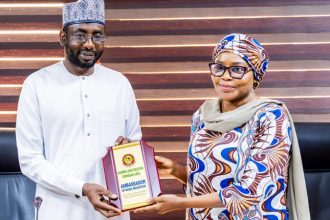In recent years, Nigeria has faced significant challenges
related to maritime security, with piracy becoming a major concern
in the Gulf of Guinea, where the country’s ports and offshore
oil platforms are located. Maritime security is a pressing issue in
Nigeria and the Gulf of Guinea region. The energy sector and
international business/trade depend to a large extent on seaborne
transport. Nigeria has a large expanse of territorial waters and
coastal towns with the Gulf of Guinea having a link to the country.
The Gulf of Guinea is vast, covering a diverse territorial area
that stretches and draws from Senegal down to Angola covering a
coastline of over 6,000km. An important fact to note is that the
Gulf of Guinea is a vital geopolitical chokepoint for shipping,
maritime transportation of oil extracted in the Niger delta, as
well as the transportation of goods to and from various areas in
the African continent and beyond (European Union,
2018).1
Piracy, including armed robbery and attacks on commercial
vessels, has led to loss of lives, hijacking of vessels, and the
disruption of international trade routes.The Nigerian government,
along with international partners, has made efforts to improve
maritime security, deploying military resources, establishing
anti-piracy laws, and enhancing cooperation with neighboring
countries2. However, these efforts have not
completely eradicated piracy or its impacts. The vastness of the
maritime environment, the lack of resources, and the sophistication
of criminal syndicates continue to pose challenges to the Nigerian
Navy and security agencies. The continued rise of piracy calls for
innovative solutions. One of the most promising solutions lies in
the strategic integration of technology to enhance maritime
security.
The Growing Threat of Piracy in Nigerian Waters
Nigeria’s maritime domain, which includes some of
Africa’s busiest ports and offshore oil facilities, has long
been a hotspot for piracy and other forms of maritime crime.
According to reports from the International Maritime Bureau (IMB),
the Gulf of Guinea, with Nigeria at its center, accounted for over
40% of global piracy incidents in recent years. These attacks often
target vessels navigating the country’s territorial waters,
with pirates hijacking ships, stealing cargo, or kidnapping crew
members for ransom.
The root causes of piracy in Nigerian waters are multifaceted.
They include weak law enforcement, inadequate surveillance of
maritime traffic, high levels of poverty, and the lucrative nature
of the illegal activities. Despite various government
interventions, the persistent and often violent nature of these
crimes suggests that traditional security measures alone may not be
enough. It is time to explore how technology can be leveraged to
enhance maritime security and curb piracy in Nigeria.
Technological Solutions to Combat Piracy
The use of technology in maritime security can revolutionize the
way Nigeria addresses the growing threat of piracy. Several
advanced technologies have already proven effective in other parts
of the world, and adapting them to the Nigerian context could have
a profound impact. Some of the key technological solutions
include:
1. Satellite Surveillance and Monitoring
Satellite technology has made it possible to monitor vast
expanses of ocean in real-time. Using satellite imagery and
advanced tracking systems, Nigeria can track the movements of
vessels in its territorial waters and beyond. This technology can
be integrated with Automatic Identification Systems (AIS) to track
the location of vessels, detect suspicious activities, and identify
ships that may be engaged in illegal operations.
Satellite-based systems such as the Nigerian National Space
Research and Development Agency’s (NASRDA) Earth observation
satellite can be used to provide continuous monitoring of the
maritime environment, identifying potential pirate vessels, and
alerting naval forces or security agencies to their presence.
Additionally, using drones equipped with high-definition cameras,
maritime law enforcement can gain visual intelligence that can
complement satellite data.
2. Unmanned Aerial Vehicles (UAVs) and Drones
Unmanned Aerial Vehicles (UAVs), also known as drones, are
increasingly being used in maritime security operations. Drones are
ideal for surveillance over large bodies of water and can provide
real-time video feeds, enhancing situational awareness. These UAVs
can be deployed to patrol Nigeria’s extensive coastline and
offshore oil fields, providing critical information to security
agencies.
Drones can also be used for intelligence gathering, as they can
be equipped with infrared cameras to detect pirate vessels in the
dark or in harsh weather conditions. They can fly at low altitudes
and can be rapidly deployed for surveillance or to support law
enforcement operations.
3. Integrated Communication and Coordination Systems
One of the biggest challenges to combating piracy in Nigeria is
the lack of real-time communication and coordination between
various maritime agencies. With the help of modern communication
technologies, Nigeria can establish a centralized command and
control system for better coordination between the Nigerian Navy,
the Nigerian Maritime Administration and Safety Agency (NIMASA),
and other law enforcement agencies.
A unified platform that integrates maritime traffic monitoring,
security alerts, and situational updates can provide a clearer and
more efficient response to piracy threats. This can involve GPS
tracking systems and real-time data sharing among local and
international stakeholders, creating an interconnected maritime
security network.
4. Artificial Intelligence (AI) and Machine Learning
AI and machine learning are increasingly being employed to
predict and prevent maritime security threats. These technologies
analyze vast amounts of data, such as ship movements, environmental
factors, and previous piracy incidents, to predict potential
hotspots for piracy. By identifying patterns and trends, AI can
provide actionable insights that help authorities respond
proactively rather than reactively.
AI can also be used in the development of predictive models,
which could forecast pirate activities and suggest optimal routes
for ships to avoid danger zones. Machine learning algorithms can
also be used to identify abnormal vessel behavior that may signal
piracy, enabling early intervention.
5. Automated Vessel Defense Systems
The development of automated defense systems for vessels can
enhance security while reducing the need for human intervention in
high-risk areas. These systems include water cannons, acoustic
devices, and barriers that can automatically activate when a pirate
attack is detected.
By equipping commercial vessels with automated security systems,
Nigeria can reduce the risk of successful attacks and improve the
overall security posture of its shipping sector. Furthermore, these
technologies can be integrated with onboard monitoring systems,
enabling crew members to respond quickly in case of a threat.
6. Blockchain for Securing Maritime Transactions
Blockchain technology, known for its ability to securely record
transactions, can be employed to improve transparency in shipping
and logistics. By using blockchain, Nigeria can create secure and
tamper-proof records of vessel activities, cargo handling, and the
status of shipments. This can help prevent the illicit diversion of
oil and other goods, which is a common issue in Nigeria’s
maritime sector.
Blockchain can also be used to verify the authenticity of
shipping documentation, reducing opportunities for piracy-related
fraud and smuggling.
The Way Forward: Collaboration and Policy Support
While technology holds great potential to combat piracy, its
effectiveness will depend on the level of collaboration between
government agencies, the private sector, and international
partners. The Nigerian government must invest in the development
and adoption of these technologies and create a conducive
regulatory environment for their implementation. Additionally,
strong public-private partnerships can ensure that the maritime
industry’s stakeholders have access to the latest tools and
training to enhance security.
International collaboration will also be crucial, as piracy is a
transnational issue. By engaging in information-sharing with other
nations, as well as regional bodies such as the Economic Community
of West African States (ECOWAS) and the Gulf of Guinea Commission
(GGC), Nigeria can strengthen its maritime security framework.
Conclusion
Piracy remains one of the biggest threats to Nigeria’s
maritime industry, but leveraging technology offers a promising
solution. By investing in satellite surveillance, UAVs, AI-driven
analytics, and other technological innovations, Nigeria can enhance
its ability to monitor, detect, and respond to piracy in real-time.
However, for these technologies to make a real impact, they must be
accompanied by strong governance, international cooperation, and
capacity building for the country’s maritime workforce. With
the right combination of technology and policy, Nigeria can create
a safer and more secure maritime environment for both local and
international shipping.
Footnotes
1. Paul Mandela Ogoun, European Journal of Science,
Innovation and Technology Vol. 2 No. 3 (2022) Maritime Security
Challenge in Nigeria and the Gulf of Guinea
2. Report On Maritime Security Management
Course
(https://niia.gov.ng/wp-content/uploads/2023/02/REPORT-OF-THE-MARITIME-SECURITY-MANAGEMENT-COURSE.pdf)
accessed 20th January 2025
The content of this article is intended to provide a general
guide to the subject matter. Specialist advice should be sought
about your specific circumstances.






